#tangs
Explore tagged Tumblr posts
Text
Fishuary day 4, surgeonfish,I did an Achilles tang
Art challenge by @fish-daily



41 notes
·
View notes
Text
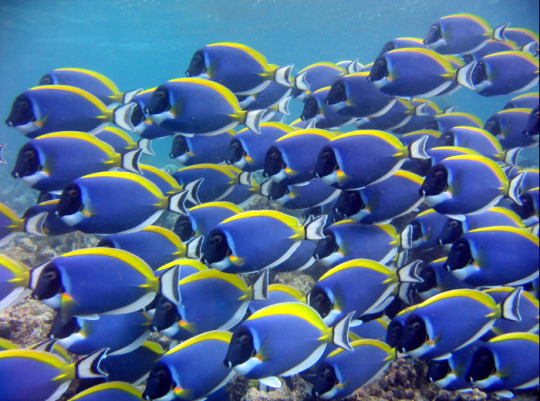
Powder Blue Tang (Acanthurus leucosternon)
Family: Surgeonfish Family (Acanthuridae)
IUCN Conservation Status: Least Concern
Found exclusively in shallow coral reef habitats in coastal regions of the Indian Ocean, the Powder Blue Tang is a distinctively marked herbivorous fish that feeds on algae, using its elongated snout and narrow, sharp-tipped teeth to scrape it off of rocks, corals and other hard surfaces. In doing so, members of this species serve a vital function within reef ecosystems, cleaning algae off of coral and ensuring that it does not prevent sunlight from reaching the coral’s dinoflagellates (microscopic organisms that live in the coral’s tissues and produce nutrients through photosynthesis, sustaining both themselves and their coral hosts.) As algae is their sole food source, Powder Blue Tangs populations vary considerably depending on seasonal variations in algae abundance, and this drastically alters their behaviour and lifestyle; when food is abundant they are highly social (living and feeding in large schools) and travel freely around their home reef, but during periods of algae scarcity they become solitary, territorial and highly aggressive towards other members of their species, defending a small algae-supporting area by chasing or biting any other tangs that come near. When algae abundance allows for it gathering in schools provides members of this species with protection from larger predatory fish such as tuna, groupers and jacks, but when threatened lone individuals may still avoid predation by taking shelter within the reef, or attempt to defend themselves using a pair of sharp-tipped scales at the base of their tails (a characteristic seen in many members of the surgeonfish family, known colloquially as the fish’s “scalpel.”) Powder Blue Tangs breed when food is abundant (with females producing buoyant eggs that float to the surface and hatch within around 24 hours of being externally fertilized by a male,) and unlike many members of the surgeonfish family in which juveniles have wildly different markings to adults members of this species have fairly consistent markings throughout their entire lives (although it has been noted that their blue bodies may become paler as a result of illness or stress.)
——————————————————————————
Image Source: https://www.inaturalist.org/taxa/123269-Acanthurus-leucosternon
#Powder Blue Tang#tang#tangs#fish#fishes#blue tang#blue tangs#zoology#biology#icthyology#marine biology#wildlife#marine wildlife#Asian wildlife#bony fish#bony fishes#animal#animals#marine animals#surgeonfish#surgeonfishes
25 notes
·
View notes
Text
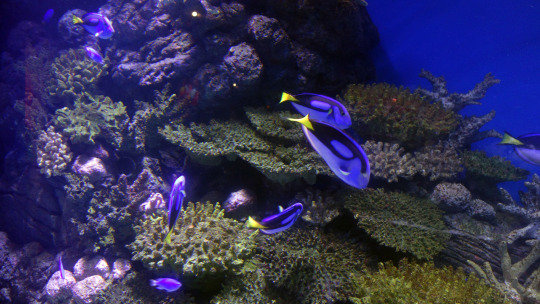
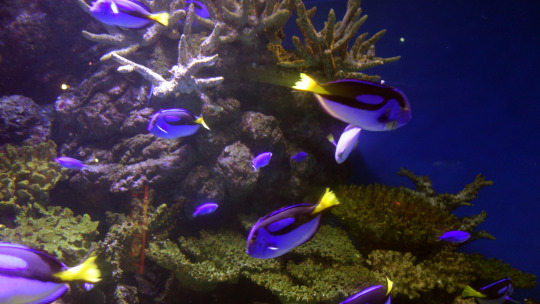
Pacific blue tangs at the Cairns Aquarium in Cairns, QLD, Australia
#blue tang#dory#tangs#tang#palette surgeonfish#blue surgeonfish#fish#fishes#fishblr#aquarium#tropical fish#surgeonfish#surgeon fish
41 notes
·
View notes
Text
AHH!! Quickly!! The artefacts have escaped the museum!! 😘😘 This video is adorable :D
These ladies are wearing Tang Dynasty hanfu, the famous "golden age" of Chinese history. Artefacts show that aesthetics during this dynasty favored fuller shaped women, if you've ever seen the figures from the museums these ladies look like exact replicas :D
Video src: 包意凡 【博物馆闭馆时间到,我俩要粗去玩!】 https://www.bilibili.com/video/BV1iJ4m1K7Mq/


#hanfu#汉服#china#中国#chinese hanfu#culture#history#fashion#clothing#historical clothing#唐朝#tang dynasty
23K notes
·
View notes
Text

tang dynasty miku
#ms worldwide!!!!!#hatsune miku#vocaloid#miku fanart#hanfu#tang dynasty#artists on tumblr#not even gonna lie i don’t even go here i listened to like. three miku songs in 2013 that’s it#but this twitter trend was so cute and inspiring so i kinda had to#pls forgive this fake fan gomenaSORRY#yumidraws
35K notes
·
View notes
Text
Wukong, what have you done this time!
18K notes
·
View notes
Photo


Mouse and Ptarmigan by Sandara Tang
8K notes
·
View notes
Text
Watch The colors on this 600 gallon mixed reef are like nothing we’ve ever seen before!
#fish#300gallons#tank#fishtanks#jkfishworld#fishtankfanatics#fishtanksofinstagram#marinelife#angelfish#tangs#colorfulfish#coral#reef#reeftank#coralreef
0 notes
Text
The issue of corallivory or similar behavior - for example, biting the mantles of clams - among the tangs and their cousins, is an old one, and one subject to armchair speculation by aquarists, when confronted with the behavior. Interestingly I have found some ichthyologists in the past, to be dismissive of reports, and observations, of such behavior by tangs. Doubtless this is motivated by the knowledge that tangs are, on the whole, very herbivorous fishes, and represent such niches par excellence. Nonetheless myself and many other people, have ourselves witnessed incidents of acanthurids and siganids, biting anthozoan tissues. Either tissue was ingested deliberately, or it was not, but in any case, polyps or colonies were observably scarred in the incidents.
Over many years, aquarists have oft speculated that these feeding activities are a form of substitute behavior, for natural grazing and browsing opportunities, that are usually lacking in our aquaria; or that such algivorous fishes instinctively recognize coral holobionts as an appropriate fallback food, should their preferred diet become unavailable during lean times. It has even been suggested that it is instead a playful behavior, or an expression of frustration, rather than a feeding behavior at all. Before we can answer the question of what makes an algivores turn corallivore, we might well ask, are tangs and their kin - henceforth, the 'tang-likes' - strictly algivorous in the first place?
Tangs or acanthurids and their kin, of which the siganids are most relevant to aquarists, are a natural clade of fishes sharing similarities through common descent. The basal division of the clade is between the siganids, or genus Siganus, and the other genera. These include Zanclus, the famed Moorish idols; Luvarus, the pelagic member of the group; and the acanthurids proper. These latter include Naso, diverging at the base; Prionurus a node later; the clade containing Zebrasoma and Paracanthurus, a node after that; and then the acanthurin nexus of species assigned to the semi-natural genus Acanthurus, and the subclade of bristletooth or combtooth tangs, Ctenochaetus, which possess mobile, flexible teeth paralleling those of grazing blennies.
Despite the well observed role of acanthurids as grazers, not all of the species are. Within the genus Naso, the most protomorohic species are herbivorous, with a secondary shift to zooplankton feeding as a derived condition. Prionurus, Zebrasoma, and the acanthurins, are all basically herbivorous, as are most of the siganids. Paracanthurus is another zooplanktivore, but using a similar reasoning - called phylogenetic bracketing - Paracanthurus, too, had herbivorous ancestors. Among the acanthurins, two species have also, independently of one another, crossed into carnivorous planktivory, these are 'Acanthurus' mata and 'A'. thompsoni.
Even considering the evolution, at least four times, of plankton feeding among the acanthurids; and the faculative consumption of gelatinous plankton by siganids; it still feels strange that Luvarus is basically a jellyfish eating, pelagic sort-of tang, growing to 150 kilograms. Again, the fascinating Luvarus is divergent from an ancestral, benthivorous habit. Though feeding on similar items happens also to be a specialty of N. hexacanthus, and A. thompsoni. Zooplankton eating members of this clade tend to evolve a more slender form, and weaker teeth and jaws, because they are no longer used in strenuous grazing behaviors. Also planktivorous tang-likes become short faced, lacking the need of their grazing relatives for a primitively lengthened face, similar to those of many herbivorous mammals on land.
Zooplankton feeding is a form of carnivory, but it is very different from rasping or nipping corals, or clam mantles, which belong to the category of carnivorous benthivory. The latter tendency does exist among the tang-like fishes, and is epitomized by Zanclus, the sponge specialist of the group. Zanclus does consume algae still, and will also eat certain anthozoans. But the animal component of its diet, is predominantly composed of sponges. At least some of the Siganus species, especially S. puellus, are now known to extensively consume spongal life, and other benthic fauna. S. puellus is atypical in the extent of its spongivory, and seems thusly to parallel Zanclus. Therefore it is clear that the tang-like diet, can easily shift to foraging, benthic carnivory from an ancestrally 'herbivorous' ancestral niche. And that the ancestral tang-like diet, was more omnivorous than simple algivory, which was nonetheless the primary source of food for these hypothetical ancestors.
Zanclus and Luvarus each remind us of the evolutionary potential of tangs and their kin; deviating as they do, from their acanthurid and siganids relatives - and it may be inferred, their last ancestors - but following such different evolutionary paths. At least a species of siganid, S. rivulatus, opportunistically preys upon jellyfishes and ctenophores, accompanied by a zebrasomin species, Z. desjardinii. But it is the behaviors of grazing and browsing carnivory in this clade, that most indicate their potential riskiness around ornamental corals and clams. Foraging Siganus sp. are well documented to consume sponges and tunicates, with reports of their feeding on brain corals, and even a toxic alcyoniid, Sarcophyton. Conversely, at least S. argenteus, S. canaliculatus, and S. javus, are all pure herbivores, and S. javus has been determined not to eat the antipatharian corals it bites at. Some other siganid species - S. vulpinus, S. spinus, S. doliatus, S. corallinus - ingest such small mass of sessile animals tissues, it's unclear if they ingest it purposefully. S. lineatus, S. punctatus, and S. punctatissimus, are all confirmed to consume sessile animals in the wild.
A certain paper recently investigated the dietary scopes of a number of siganids and acanthurids. For example, Zebrasoma scopas consumes some benthic invertebrate material, but very little of it; whereas Z. veliferum apparently does not. In a similar vein, Naso lituratus was not feeding on benthic animals, though N. unicornis was a slight consumer. (Incidentally this paper identifies no animal materials in the diet of S. spinus either.) A true Acanthurus species, A. lineatus, consumes some benthic faunal material, whilst A. nigrofuscus and A. nigrioris, which are also truly Acanthurus species, were estimated as strictly herbivorous. The species 'A'. leucopterus supposedly consumes some benthic animal material, although its relative, 'A'. nigricans supposedly does not. Whereas the convict tang, 'A'. triostegus, appears to be a strict vegetarian. (Properly the genus Acanthurus may only include fishes that are closer to its type species, A. sohal, than that of its sister genus, Ctenochaetus strigosus.)
The derived acanthurin Ctenochaetus strigosus, foes not forage foods of animal origins, whereas C. striatus does consume them, as a part of indiscriminate feeding behaviors. Ctenochaetus belong to a group of supposed Acanthurus fishes that have muscular stomachs, which have been compared to the gizzards of birds. Among such species, 'A'. nigricauda, olivaceous, and pyroferus are regarded as vegetarians, and blochii as almost so; but more interesting are the outright omnivorous 'A'. dussumerieri and xanthopterus, both of which extensively consume foods of benthic animal origins. Tangs of this guild will even eat carrion, because they take fish flesh when it is used as angling bait. It is as though the apomorphic stomach of this clade, has allowed new trophic niches, towards increased carnivory, and also towards the specialized grazing of biofilms, in the craniofacially specialized genus Ctenochaetus.
I'm not entirely sure how reliable the information actually is. Not least because all such studies, by their nature, need to depend upon a sample size. Fish can also shift through dietary niches with maturity, or in tune with the natural seasons. There is too close a kinship between some of the tangs that are supposedly the strictest vegetarians, and those that are confirmed to sample benthic animals in the wild. Yet subtle dietary niche partitioning, can allow related species to exist in the same environment. Placed into an unfamiliar environment, and often in the absence of their natural food preferences, it's no wonder that tangs and siganids can begin to taste corals as a substitute for natural behaviors, not least because coral holobionts are often rich in photosynthetic symbionts. My intuition is that those species which nip fronds of fleshy macroalgae, are predisposed to bite fleshy polyps and wavy clam mantles; and those of grazing habits, to try biting down on massive, encrusting, and laminar growth forms.
There is some public fascination upon seeing footage of deer consume birds, or even chickens - by no means strict vegetarians! - catching mice and sparrows. In real life animal feeding behaviors are subject to personal and situational variation, and animals do learn what is or isn't food, by way of experimentation. Some of the images and videos of herbivores eating other vertebrates, are statistical tail end effects, and not highly probable events. One fine example might include a hippopotamus, killing and eating an impala Other instances are just low key but widespread natural behaviors, that many people are unaware of. My informed intuition, based upon the evolution and ecology of the tangs and siganids, is that both phenomena are variously in play.
#siganids#acanthurids#tangs#corallivory#coral eating#reef safe#surgeonfishes#spinefoots#rabbitfishes#foxfaces#herbivory#omnivory#behavioral problems
1 note
·
View note
Text






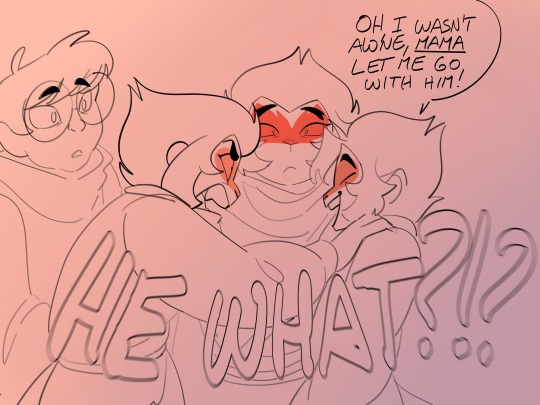












No. I haven't uploaded the wrong image. You guys will have to wait just a little more to know his new name :)
Hugs! hugs for everyone! (Also Wukong is about to kill Macaque again)
Also eyooo MLP reference let's gooo
Shadowpeach Bio Parent AU (PREV/ FIRST / NEXT)
Next part marks the END of Part 8!! Finally!
And is coming on February 14th, 1PM ET
#my art#kyri45#comic#lmk#lego monkie kid#lmk fanart#lego monkie kid fanart#lmk season 5#lmk shadowpeach#shadowpeach bio parents au#monkey mk#monkey qi xiaotian#lmk art#lmk macaque#liu er mihou#lmk sun wukong#lego monkey kid fanart#lmk wukong#lmk monkey king#lmk tang#lmk sandy#lmk li jing#lmk nezha#lmk mei#lmk red son#lmk spicynoodle#lmk chang'e
5K notes
·
View notes
Text







Final Days of fish february !! You can now get the original paintings on my Ko-Fi if you are interested !
#fishposting#fish#gouache#my art#traditional painting#gouache painting#watercolor#traditional art#artists on tumblr#whitetip reef shark#my beloved#purple tang#alligator gar#PEJELAGARTO#blacksaddle toby#longhorn cowfish#ribbon eel#northern pike#these last three were comms so they are not on sale !
5K notes
·
View notes
Text

Wow okay
#clown does art#lmk#lego monkey kid#lmk sun wukong#lmk macaque#lmk mk#lmk mei#lmk tang#lmk pigsy#lmk freenoodles#lmk sandy#lmk red son#lmk bai he
4K notes
·
View notes
Text

Whoops, wrong parent.

He sure did
#no i will not elaborate#maybe#tmnt#teenage mutant ninja turtles#art#tmnt 2012#tmnt 2012 tang shen#tmnt 2012 karai#tmnt 2012 raph#tmnt 2012 mikey#tmnt fan art#au idea#just a little one#eyestrain#annnnd back to my big aus#wrong parent au
3K notes
·
View notes
Photo
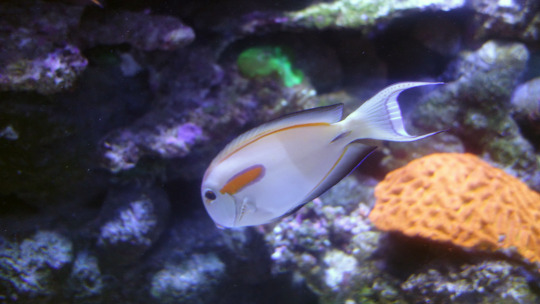
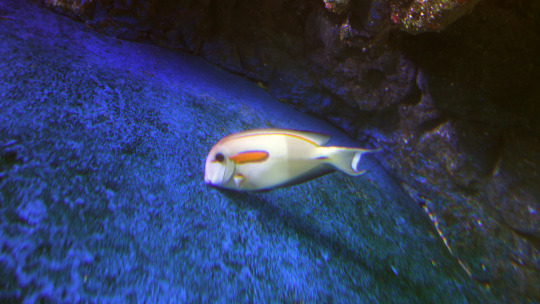
Orange surgeonfish at the Cairns Aquarium in Cairns, QLD, Australia
#fish#fishes#fishblr#surgeonfish#surgeon fish#tropical fish#aquarium#tang#tangs#unicornfish#unicorn fish
12 notes
·
View notes
Text
Different brow shapes in historic China. Which one do you like most?
(My favourite is the Moon curved brows and the Moth brows, although the Osmanthus leaf brow is what I picture when I think of the Tang Dynasty.)
Src:
杨子古典美学妆造
【来看看古代都有什么���形?】
https://www.bilibili.com/video/BV1QCCJY4E2U/
(ENG subs by me :D)
#hanfu#汉服#china#中国#chinese hanfu#culture#history#古代眉毛#唐朝#宋朝#汉代#Eyebrows#Chinese historic eyebrows#tang dynasty#song dynasty#han dynasty#makeup#Historic makeup
3K notes
·
View notes